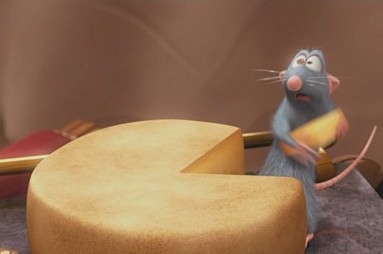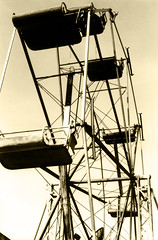altruism
A study published in Science last week was particularly compelling to me, and I had a particularly visceral reaction to it. (If that link doesn't work, try this summary at the Brainethics blog.) The researchers, from 13 different universities, studied variations in altruistic behavior among 15 widely different societies around the world. Their conclusion is that people have evolved (both genetically and culturally) to be altruistic to the extent that their society punishes people who are selfish.
Culture-gene coevolutionary models that combine strategies of cooperation and punishment predict that local learning dynamics generate between-group variation as different groups arrive at different "cultural" equilibria. These local learning dynamics create social environments that favor the genetic evolution of psychologies that predispose people to administer, anticipate, and avoid punishment (by learning local norms).The reason I pay such close attention to altrusim is that I am reacting against the philosophy of selfishness advocated by Ayn Rand. When I was a small child, my father unfortunately went through a phase where he was a supporter of Rand's Objectivism. To give you an idea of this noxious philosophy, let me quote from memory two metal plaques. The first, attached to the front door, stated "No Altruism Spoken Here." The second, hung in a bathroom, said "I swear by my life, and my love of it, that I will never live for the sake of another man, nor ask another man to live for mine." As soon as I understood these philosophies, I fairly rapidly rejected them (and my father became a traditional liberal, thankfully). But I still refuse to read any of Rand's work, and find her ethics and philosophy morally reprehensible.
Which brings me back to the study. As you can imagine, it's important to me that altruisim, that is kindness to people you are not related to, without expectation of future payback, has been shown to have a genetic basis. It has apparently been a bit of a mystery why it evolved, however. This new study follows up on some more limited research on American college students, as well as some theoretical work, that had suggested that people who live in cultures where a lack of altruisim was punished more severely were more likely to act in an altruistic manner. In the new study, subjects in the various cultures around the world (mostly small, non-industrial cultures) were asked to play several different games with two or three players. In one game, the ultimatum game, one player specifies what proportion of a pot of money they would accept, while the other player specifies how much of the pot the first player receives. If the second player makes an offer the first player won't accept, neither gets the money. So, for example, if we were given $10 to split, you might say you would accept any amount from $4 to $10. If I then (not knowing what your rule was) offered $5, we would both get $5, but if I offered only $3, we both get nothing (and I am punished!). Based on differences in how much people are punished in this game and altruistically rewarded in another game, the researchers could figure out how much an inclination to punish is related to an inclination to be altruistic. It turns out that there's a positive relationship; the more likely you are to punish someone who is not altruistic, the more likely you are to be altruistic. The key graph in the paper, below, shows the relationship. As you move right (more punishment), societies tend to move up (more altruism). Very intruiging.

Labels: science



















